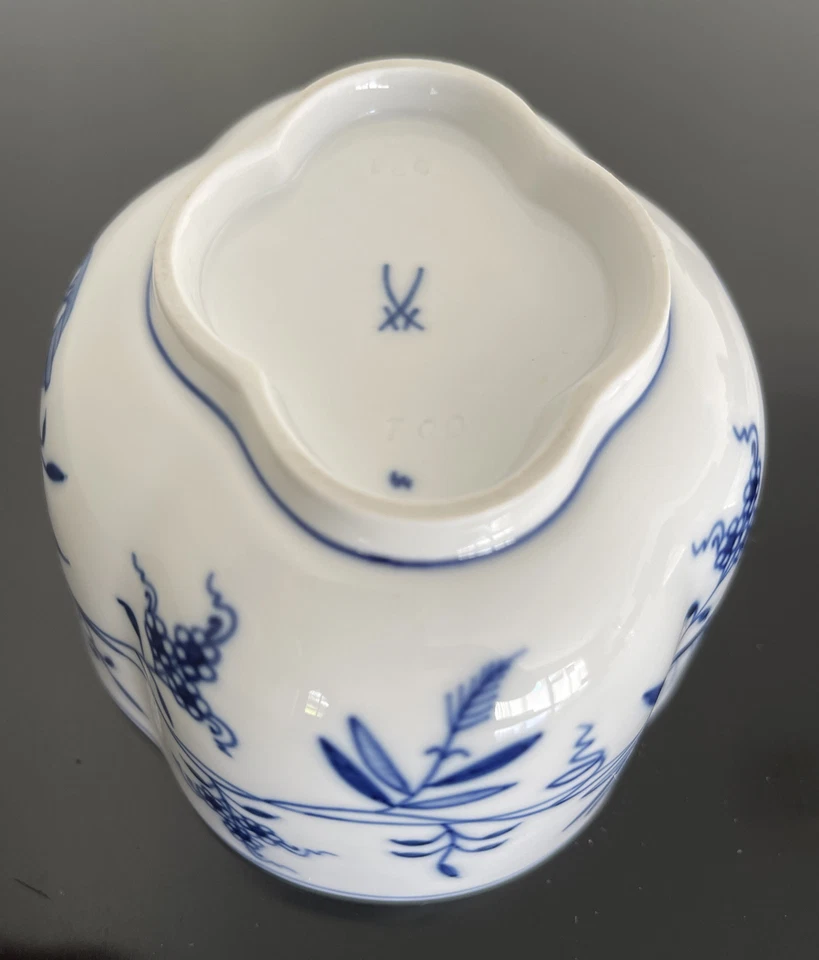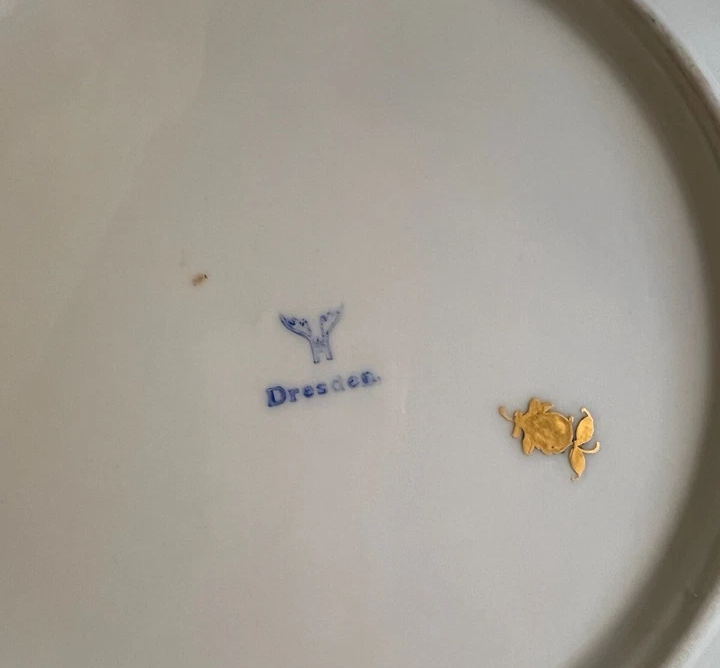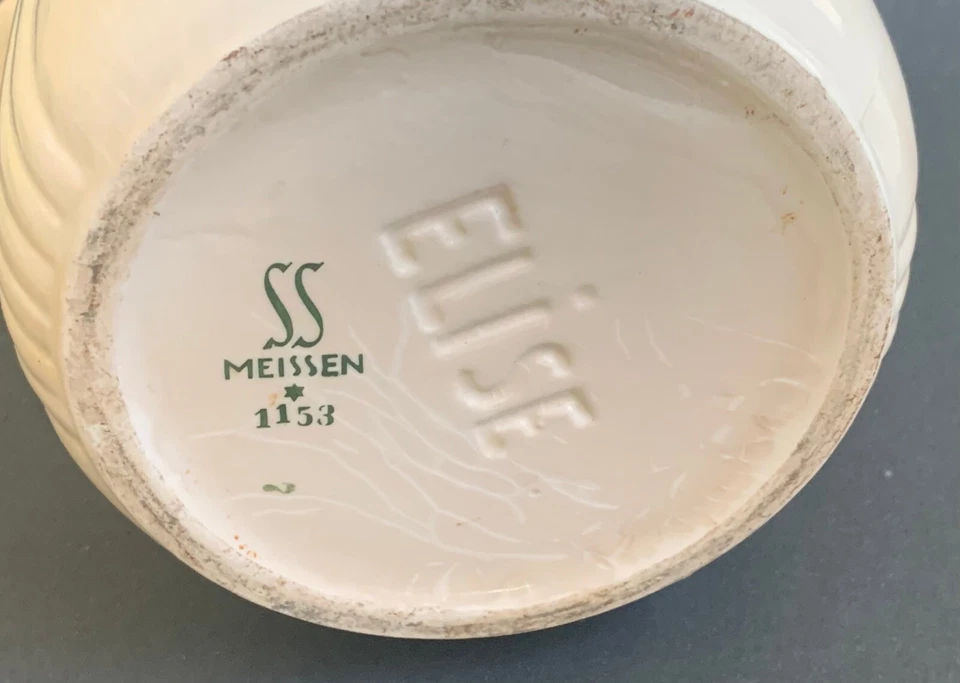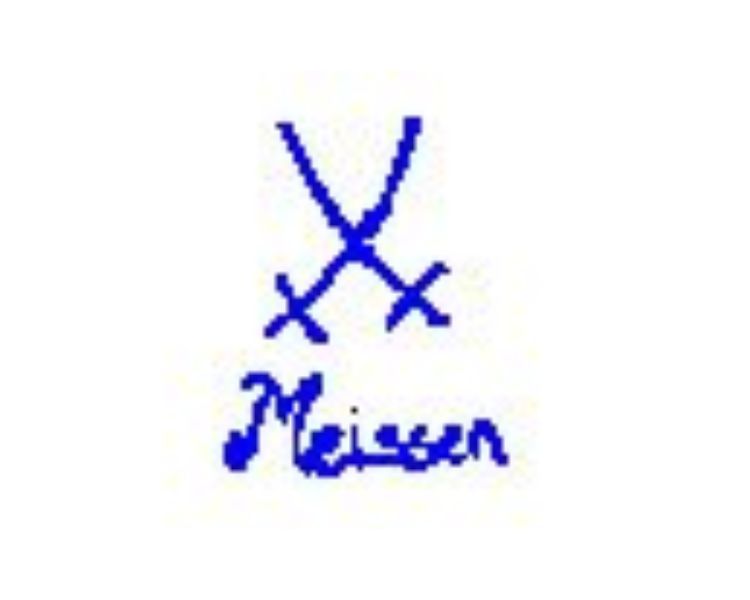10 Meissen Porcelain Marks That Indicate High Value
Meissen porcelain is famous for its attention to detail and beautiful craftsmanship. Each piece has a specific mark that provides valuable insight into its origin and worth. These marks can vary in style, design, and rarity, making some more valuable than others. If you are new to collecting or an experienced enthusiast, learning to spot these marks is a key part of the process. Some of these marks are hard to find, which adds to their appeal.
This post may contain affiliate links, which helps keep this content free. Please read our disclosure for more info.
Crossed Swords Mark

The crossed swords mark is one of the most recognized symbols for Meissen porcelain. First introduced in 1720, it signifies a piece that was made at the Meissen factory, ensuring authenticity. The value of a piece with this mark can range from $150 to over $1,000, depending on the rarity and condition of the item. Older pieces, particularly from the 18th century, are the most valuable and highly sought after by collectors.
This mark is most commonly found on Meissen dinnerware, figurines, and decorative pieces. The crossed swords mark signifies a long history of craftsmanship, which adds to the piece’s appeal. Meissen’s early pieces with this mark are considered the most valuable, especially those produced before the 1800s. As the mark became more widespread over time, it still maintains its prestigious connection to high-quality porcelain.
The Meissen Blue Onion Mark

The Blue Onion pattern is one of the most iconic designs associated with Meissen porcelain. Introduced in 1739, this pattern features intricate blue floral designs that have become synonymous with the brand’s fine craftsmanship. Pieces with the Blue Onion mark can range in value from $150 to $2,000, depending on the condition and size of the item.
This pattern has remained popular for centuries due to its timeless appeal and detailed artistry. The Blue Onion design is often used on dinnerware, vases, and decorative items. Its longevity and continued production make it one of Meissen’s most recognized and valued marks. Collectors seek pieces with the Blue Onion pattern for both their historical significance and their lasting beauty.
The Double Crossed Swords

The double crossed swords mark was used by Meissen from around 1760 until the early 19th century. This version of the crossed swords mark is slightly different and often indicates an even higher quality of craftsmanship. Items marked with the double crossed swords can range in value from $500 to $2,000, with certain rare items fetching higher prices. The pieces from this period, especially those with intricate designs, are highly regarded by collectors.
Collectors often look for the double crossed swords mark because of its association with the Meissen pieces produced during the height of the company’s early success. This mark is typically found on both porcelain figures and tableware. The rarity of these early marks makes the pieces more valuable, particularly those in excellent condition. The higher prices reflect both the age and the historical significance of these porcelain items.
The Meissen Star Mark

The Meissen star mark was used on porcelain pieces produced from 1720 to around 1750. This mark is characterized by a star-shaped design around the crossed swords and is considered a rare variant. Pieces with the Meissen star mark can range in value from $300 to $1,500, depending on the rarity and the condition of the item. Collectors seek these items due to their scarcity and the high level of craftsmanship associated with them.
Items with the Meissen star mark are highly valued for their early production and intricate designs. They can be found on both large decorative pieces and smaller porcelain objects. This mark indicates that the piece was created during a time when Meissen was perfecting its techniques and gaining international recognition. The rarity of the star mark, combined with the age of these pieces, makes them highly collectible.
The Meissen I Mark

The Meissen I mark was used between 1815 and 1924, often appearing on pieces produced during the early 19th century. This mark features the crossed swords with the letter “I” underneath, indicating that the piece was made by a skilled Meissen artisan. The Meissen I mark is relatively rare, as it was only used for a short period during a time when the company was producing some of its finest porcelain. Pieces marked with the Meissen I typically range in value from $200 to $1,500, with higher prices for items in pristine condition or those with exceptional detail.
Collectors appreciate the Meissen I mark for its historical significance and the quality of the pieces produced during this period. The “I” indicates a specific period of craftsmanship when Meissen porcelain was refining its techniques. As pieces with this mark become harder to find, their value continues to rise. The rarity of the mark makes it a highly desirable addition to any porcelain collection.
The Meissen Dresden Mark

The Dresden mark, used from 1740 to 1780, signifies a high level of craftsmanship and artistry in Meissen porcelain. This mark is often seen on intricate figures and decorative items produced during the Rococo period. The value of these pieces ranges from $300 to $2,500, with particularly rare or well-preserved items fetching higher prices.
The Dresden mark is recognized for its association with Meissen’s efforts to produce highly detailed and ornamental porcelain. These pieces are sought after by collectors due to their historical significance and the fine artistry involved in their creation. The pieces from the Dresden period are particularly valuable because they represent a pivotal time in Meissen’s production. As such, these items are highly collectible and can offer significant returns to collectors.
The Meissen C Mark

The C mark was used by Meissen in the early 18th century, from approximately 1720 to 1740. This mark features a simple letter C beneath the crossed swords and was typically used on certain small decorative pieces and tableware. A piece bearing the C mark can be valued between $200 and $1,000, with higher prices for more detailed items or those in pristine condition.
This mark is often seen on smaller Meissen porcelain items such as teapots and figurines. The simplicity of the C mark, combined with the time period in which it was used, makes these items rare and desirable. While less common than the crossed swords alone, the C mark still holds substantial value for those who are familiar with early Meissen pieces. These marks reflect the factory’s transition into a more standardized production process.
The Meissen Dot and Cross Mark

The Meissen dot and cross mark was used during the mid-17th century and is known for its distinctive design of a dot placed inside the crossed swords. This mark was used on both functional and decorative pieces, including figurines and dinnerware. The value of a piece marked with the dot and cross can range from $200 to $1,500, with higher prices for larger or more intricate items.
This mark indicates that the piece was produced at a time when Meissen was innovating its designs and expanding its reach. Items with the dot and cross mark are prized for their historical significance and fine craftsmanship. Collectors often consider these pieces as hidden gems because they are less common than other marks. The scarcity of this mark adds to its allure and increases its market value.
The Meissen Art Deco Mark

The Meissen Art Deco mark, introduced in the 1920s, features the crossed swords along with a more modern design element. These pieces combine the traditional Meissen craftsmanship with the bold, geometric style of the Art Deco movement. The value of these items typically ranges from $200 to $1,500, with rarer pieces going for higher amounts.
The Art Deco mark is unique in that it bridges the gap between traditional porcelain and the more modern styles of the early 20th century. Meissen used this mark to produce both functional pieces and decorative items that would appeal to the fashionable elite of the time. Collectors of Meissen often seek out these Art Deco pieces because of their distinctiveness and the transition they represent in the brand’s history. As these pieces become harder to find, their value has risen among collectors.
The Meissen Name Mark

The Meissen name mark, which features the words Meissen above the crossed swords, has been in use since the 19th century and is still used today. This mark is commonly found on items produced from the mid-1800s onward, signifying a piece made at the renowned Meissen porcelain factory. The value of pieces marked with this name mark can vary widely, ranging from $100 to $2,000 or more, depending on the piece’s age, rarity, and condition.
The Meissen name mark is highly recognized worldwide, making it a symbol of quality and history in porcelain production. While this mark is more common than some other Meissen marks, the pieces still hold great value due to their fine artistry. Older items, particularly those with intricate designs or from limited series, are more sought after by collectors.
This article originally appeared on Avocadu.
